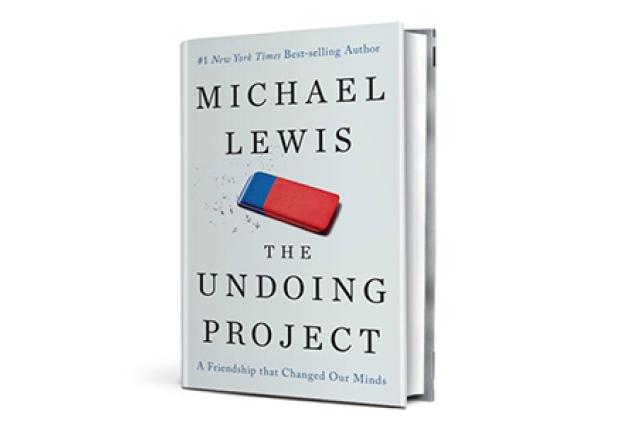Good Reads: The Ape that Understood the Universe Will Challenge and Delight Readers of All Stripes
What’s the connection between suicide bombings, lactose intolerance, and the majestic beauty of a peacock’s tail?
In this short blog, I cannot fully answer the question posed above. But what if I told you there might be a way to connect each of these strange phenomena – from suicide bombers to beautiful plumage? Connecting such phenomena is what Steven Stewart-Williams undertakes in his recently published book, The Ape That Understood The Universe: How The Mind and Culture Evolve (which I’ll hereafter refer to as simply The Ape).
From Stewart-Williams’ perspective, the connections between things as seemingly different as helping a stranger and not mating with your close genetic relatives are as plain as the nose on Charles Darwin’s face. The Ape is a bold proclamation of the power of the evolutionary perspective, including how evolutionary principles can be applied to understanding human behavior and culture. To understand Stewart-Williams’ reasoning, we must get the evolutionary perspective straight, and this is what Stewart Williams embarks on for the first few sections of the book.
The first two chapters invite us to take a deep dive into our bodies, from organ to organ, cell to cell, and gene to gene. The Ape explains how our genes contain coded information that has passed from body to body for millions of years. In every cell of our bodies, our genes contain crucial information transferred from parents to children in an unbroken lineage that goes back as far as the beginning of life on earth. We’re talking way back. Our genes provide the instructions for building proteins, like little construction workers, that do everything from allowing us to see to giving us a certain kind of toenails. Everything from the neural networks of our brains to our capacity to love and to hate depends on our genes.
Your genes have survived as a result of what they were able to produce in the world of ages past. For example, genes that produced healthier bodies (especially in youth) tended to survive at much higher rates than genes that made us unhealthy. Likewise, genes that produced highly dexterous fingers, especially in ancestral times, tended to survive more often than genes that produced floppy, web-like hands (in people, that is; duck-billed platypuses are an entirely different story). This evolutionary perspective enables us to understand how all living beings in the world today came to be.
The gene’s-eye-view of The Ape is central to Stewart-Williams’s reasoning. For example, to understand why people avoid mating with close genetic relatives in cultures across the globe, Stewart-Williams suggests that we must look at the genetic consequences of such behavior. So, we know that incest leads to a higher probability of inherited diseases, which would lead to a greater likelihood of death and lower numbers of healthy offspring. Having fewer offspring will tend to lead to the extinction of certain genes. On the other hand, preferring non-relatives would lead to healthier offspring. Any genes that reduce the chances of incestuous mating would thus become successful. This is but one example of many social phenomena that we see universally across cultures. In cultures all over the world, for example, people prefer sweet tastes over bitter ones and use highly complicated languages.
But wait!, uyou might say. How can you ignore socialization!? Perhaps incest aversion is something that is taught to us all when we are young. How do we separate evolutionary pressures and cultural ones? In The Ape, Stewart-Williams explores and compares both evolution and socialization. Inevitably, he favors evolutionary arguments. But his answers are not all cut and dry; at times, they are complex if not downright messy. Culture, environment, and genes interact in a complex manner, and we are only beginning to understand how these processes works.
Regardless, Stewart-Williams strongly rejects a strict socialization model. Instead, he advocates for the gene-meme coevolution model. Essentially, he argues that there is another replicating force in the world, which developed as homo-sapiens (modern humans) developed the capacity for complex language. Memes “evolve” following a process very much like Darwin’s natural selection (a.k.a. “survival of the fittest”). Some cultural inventions tend to replicate and survive better than others because they are more “fit” in that specific environment. Memes, then, are ideas or cultural units that are passed from person to person: replicating, mutating, and surviving through human beings.
Written language is a meme, for example – as is pasta, cooking with fire, and even “Baby” by Justin Bieber. Richard Dawkins famously argued long ago that people are just gene-machines – lumbering biological collections of thousands of genes. In Stewart-Williams’ extension of Darwin, we are both gene machines and meme-machines; hosts that transfer genetic and cultural units through time and space. So can this explain the connection between suicide bombings and the beauty of a peacock’s tail? In The Ape, readers will see that the answer is yes. But if you want the details, you should go read this book!
To summarize, readers from all kinds of intellectual traditions should check out this clever and provocative book. The Ape That Understood The Universe takes a radically innovative approach to understanding the human experience. Unless you already have a Ph.D. in evolutionary psychology, this book will challenge many of your assumptions about the world. Stewart-Williams is persuasive, in large part, because he takes some of the common critiques of evolutionary psychology very seriously. From addressing the idea that evolutionary accounts are “just-so stories” to exploring the implications of genetic drift (i.e., survival due to random chance rather than surviving because a gene is more “fit”), Stevens-Williams gives readers lots of important things to think about.
For Further Reading
Stewart-Williams, S. (2018). The Ape that Understood the Universe: How the mind and culture evolve. Cambridge, U.K: Cambridge University Press.
Dawkins, R. (1989). The Selfish Gene. Oxford: Oxford University Press.
About the Author
Zach Rausch is a graduate student in the psychology department at SUNY, New Paltz. His broad-scoping research interests include evolutionary psychology, mental health, intellectual history, moral psychology, and much more!




